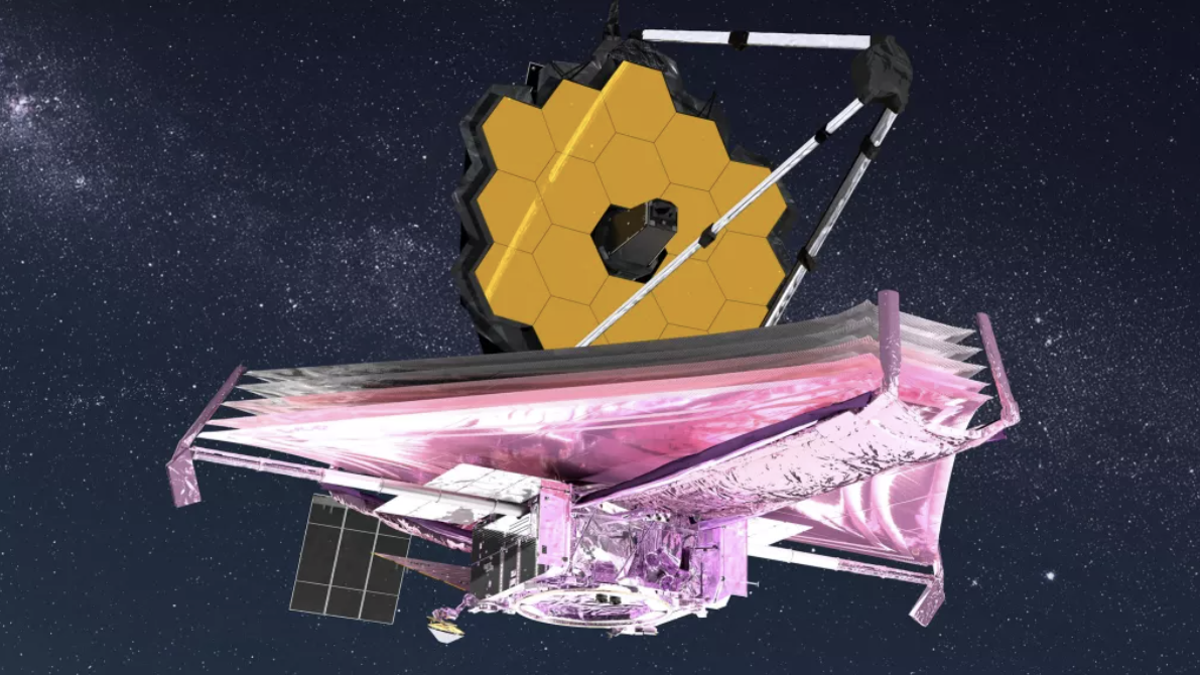We're One Step Closer To Peering Into The Birth Of Galaxies

Artist rendering of the James Webb telescopeIllustration: NASA
The James Webb space telescope is almost ready for scientists anxious to peer into the deeps of space and time, but it’s also a thrilling moment for all of humanity. We are now nearing the end of the most significant deployments with all 18 of the JWST’s golden hexagonal mirrors deploying in perfect order and days ahead of schedule on Wednesday.
You really love to see it. NASA Administrator Bill Nelson tweeted about the victorious moment on Wednesday.
While it seems like the JWST is ready to start peering into the inky reaches of the known universe, there are still a few days of travel to Sun-Earth Lagrange 2, a gravitationally stable point in space nearly a million miles from the Earth on the opposite side of the sun (for scale, the moon is only 238,900 miles from Earth.) The great distance will allow the telescope to operate at the extremely cold temperatures required for its infrared-sensitive mirrors, about minus 370 degrees Fahrenheit.
That distance is also why the JWST’s deployment is so stressful. With the Hubble telescope, astronauts were able to visit and make adjustments or repairs. No such luck here. We’ve literally blasted one of the most advanced pieces of technology humans have ever produced into space, and if anything were to go wrong, it would be decades of development and billions wasted, not to mention the life’s work of hundreds of people. No pressure!
After the JWST makes it to L2 later this month, thousands of micro adjustments will be needed to focus the delicate mirrors into one giant mirror. The painstaking process is expected to take three months, according to Space:
JWST’s golden primary mirror includes 18 individual hexagonal segments, each controlled by seven actuators that allow precise movements. All 18 segments are now in their deployed positions several days sooner than scheduled.
Work began on the mirror segments on Jan. 12 and was expected to take about 10 days. But despite today’s announcement, those mirror segments aren’t quite ready to observe yet. First, NASA must conduct the painstaking process of fine-tuning every mirror’s position to turn 18 individual views of the universe into one large ultra-powerful mirror.
So we’re not out of the woods yet. Still, the two most dangerous maneuvers — deploying the delicate sun shield and unfolding the mirrors — have been completed.
I’m not going to lie, humanity has been pretty disappointing lately. This telescope and its journey have been a bright spot in a long, dark winter of the soul. Just listen to what we are capable of: Once up and running, the JWST will peer into the deep infrared past to photograph some of the first stars and galaxies to form as well as examine exoplanets’ atmospheres for signs for possible signs of life — among countless other tests and experiments. And that’s not all. From News9, which has a comprehensive timeline of the JWST’s development:
A number of technologies that just did not exist at the time of conception were created just for the Webb. These included a light but tough sunshield to protect the instruments from radiation, the near and mid-infrared detectors, lightweight backing frames for the mirror segments, and microshutters the width of three to six human hairs to selectively block out light and allow the observatory to better image its targets. NASA also developed the software and algorithms needed to make the nineteen individual mirrors on the instrument function as a single surface.
There’s a glimmer of hope out there, a million miles away. You can follow the JWST on its journey right here.







